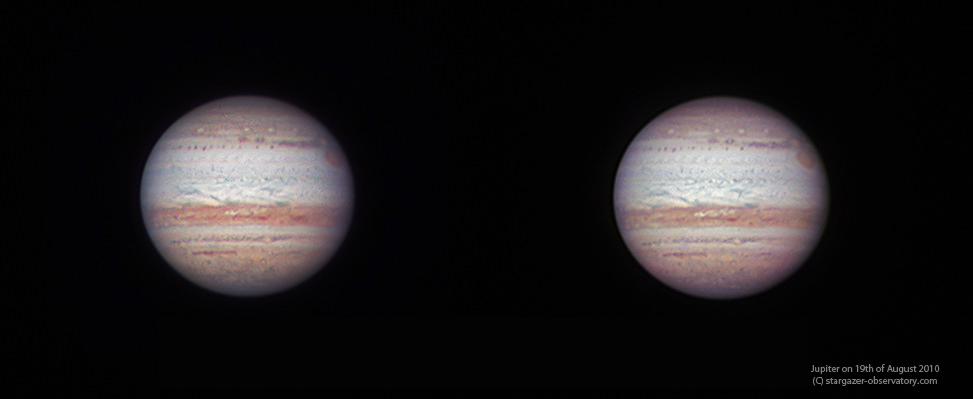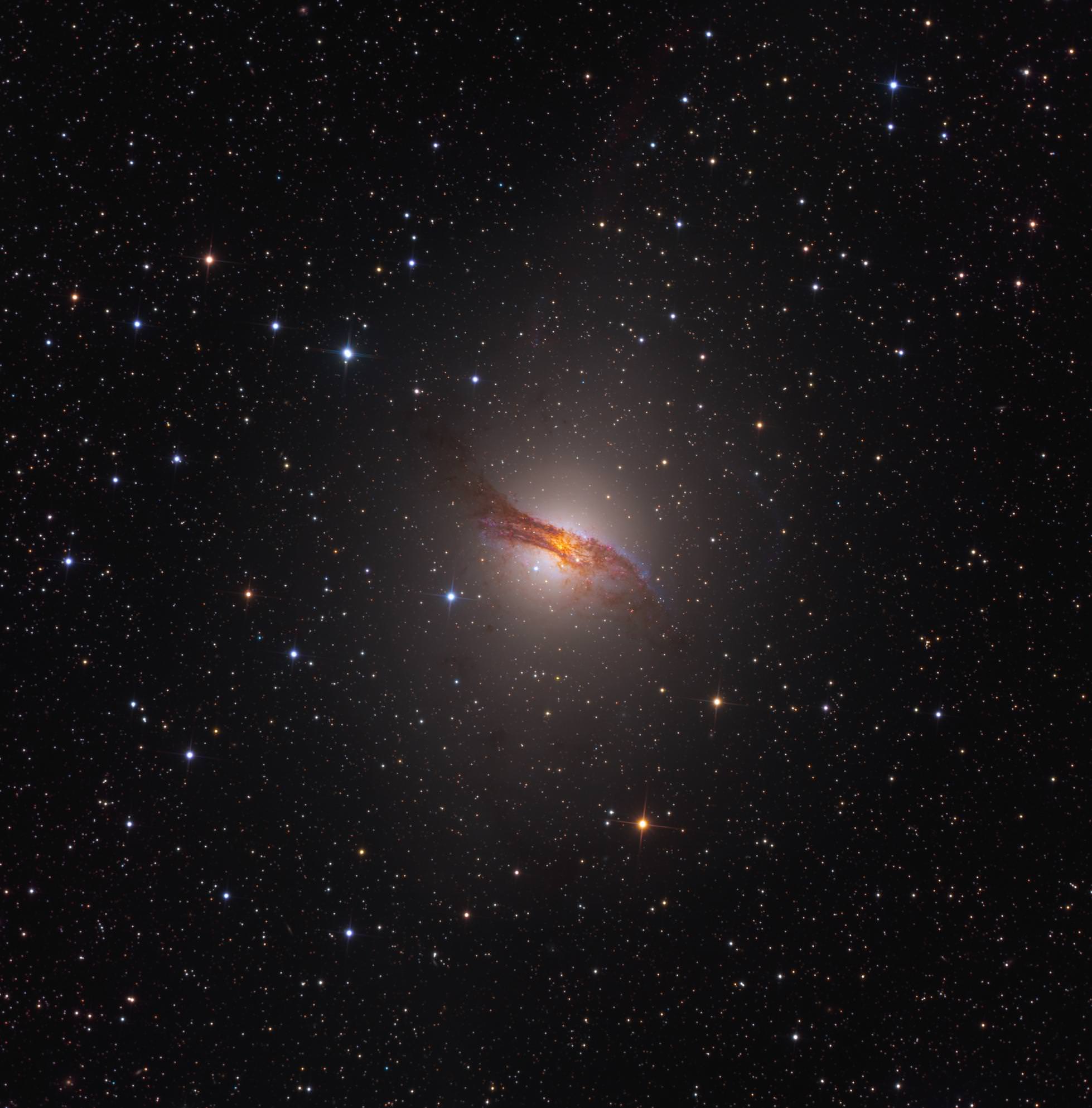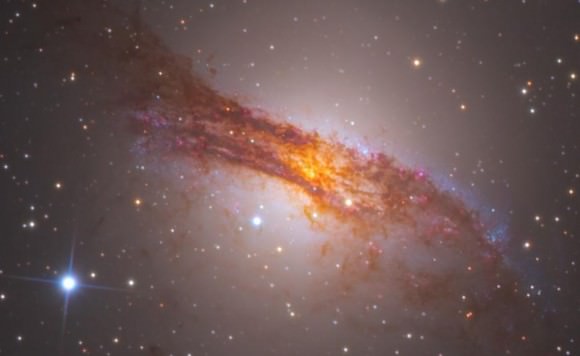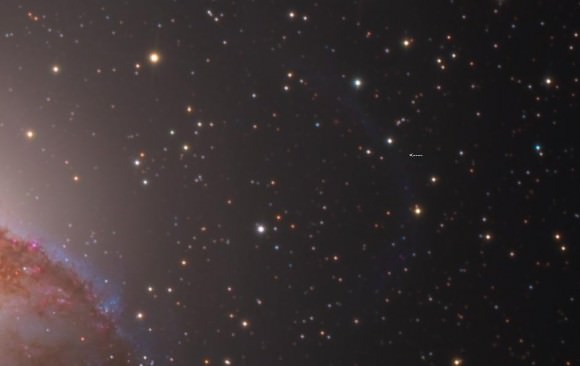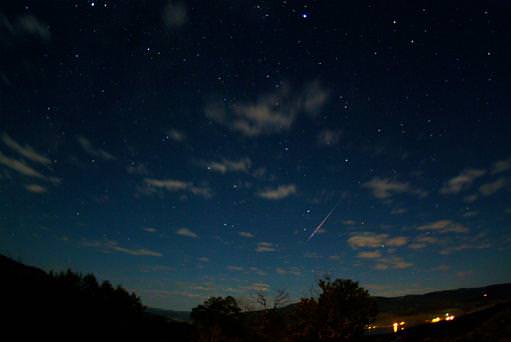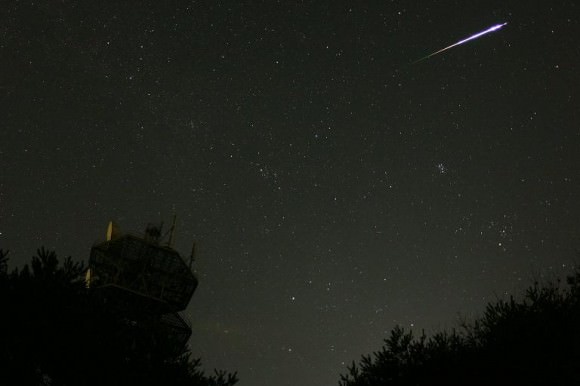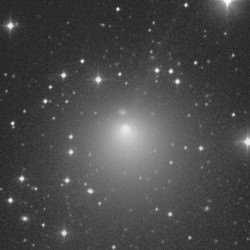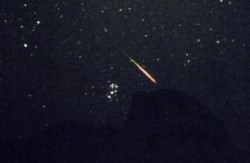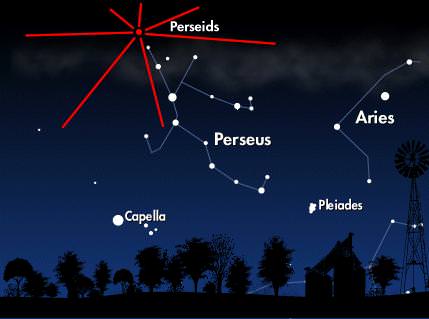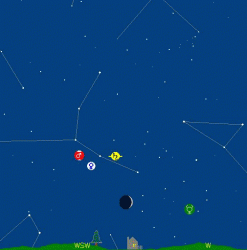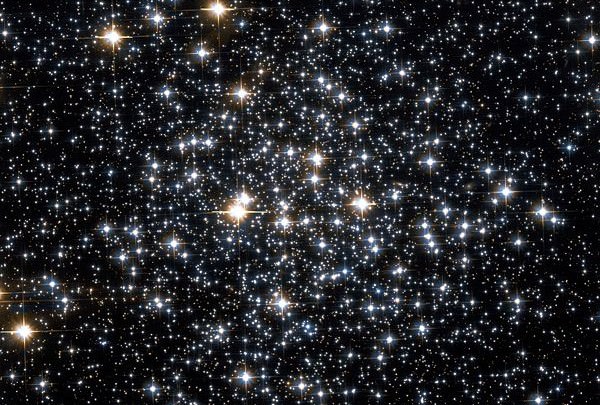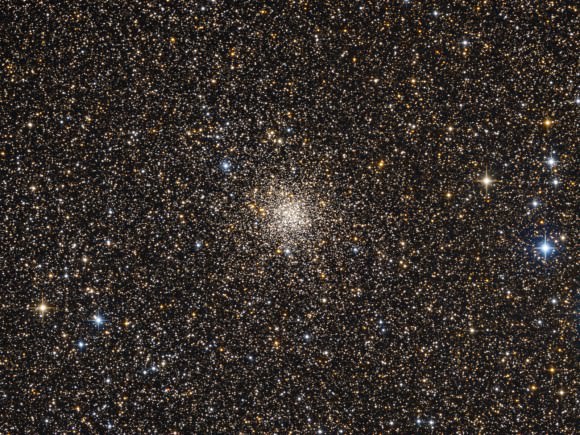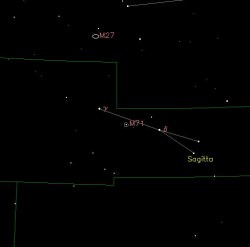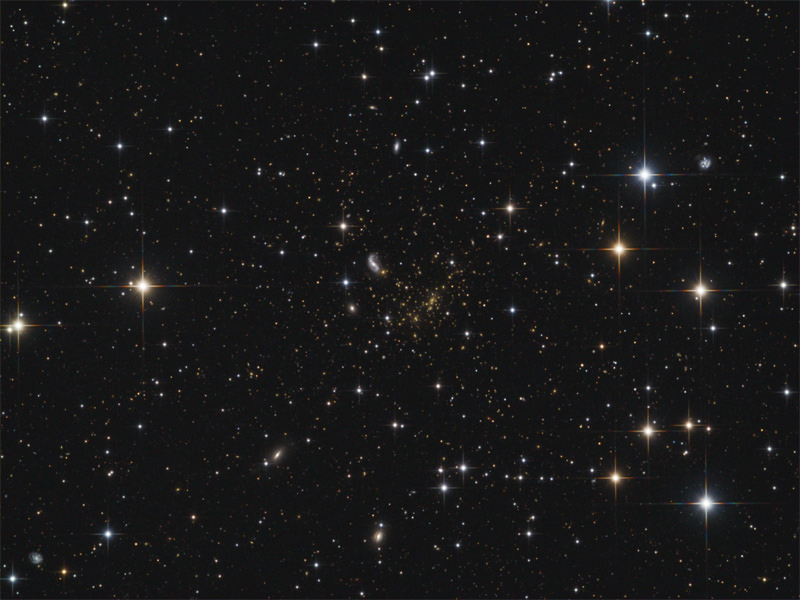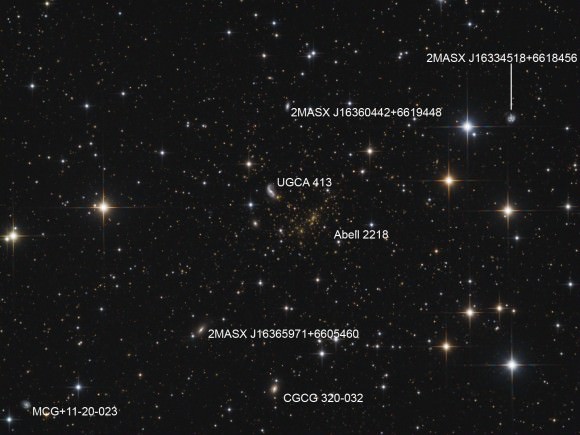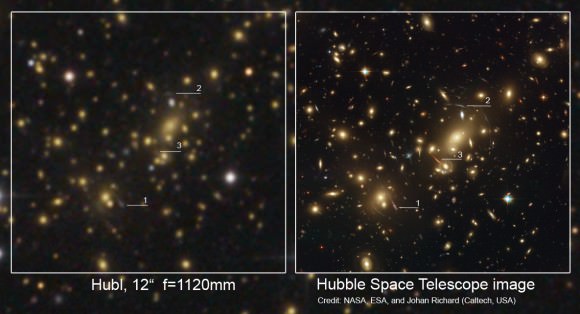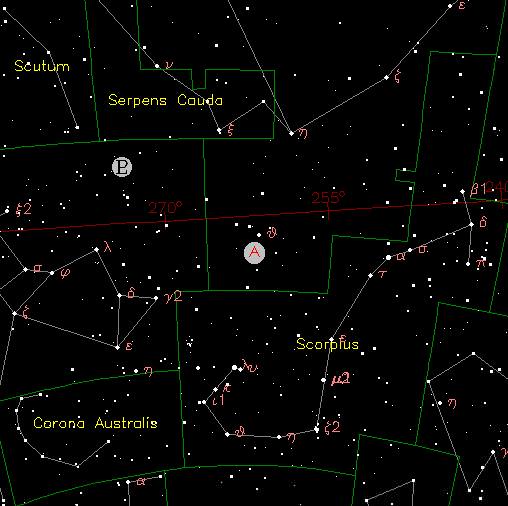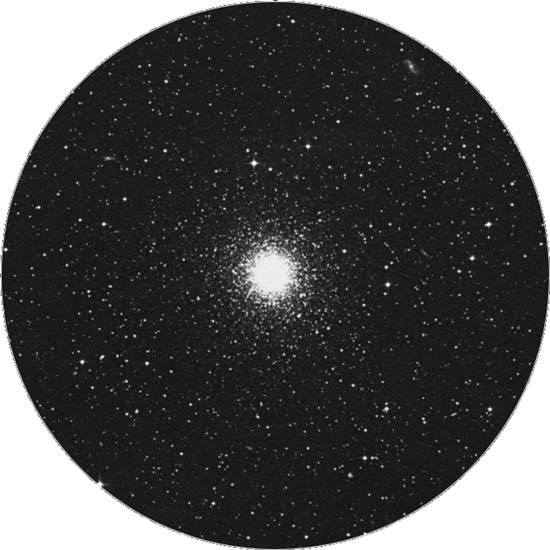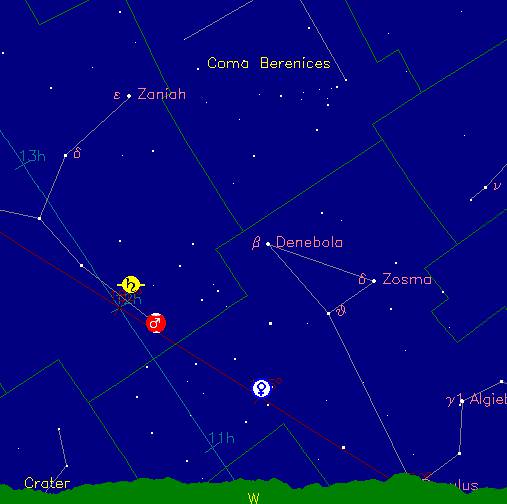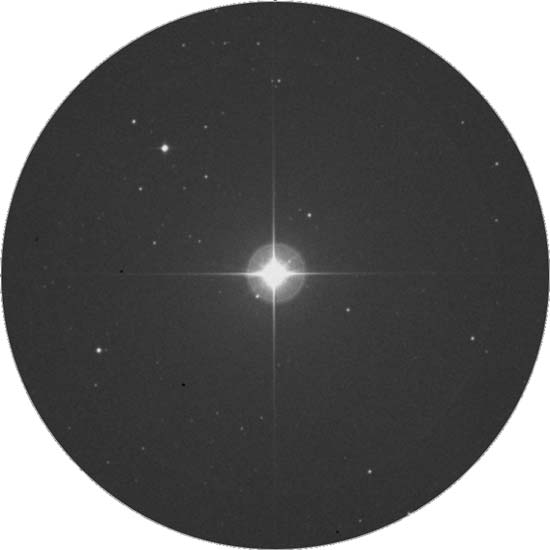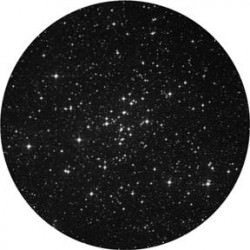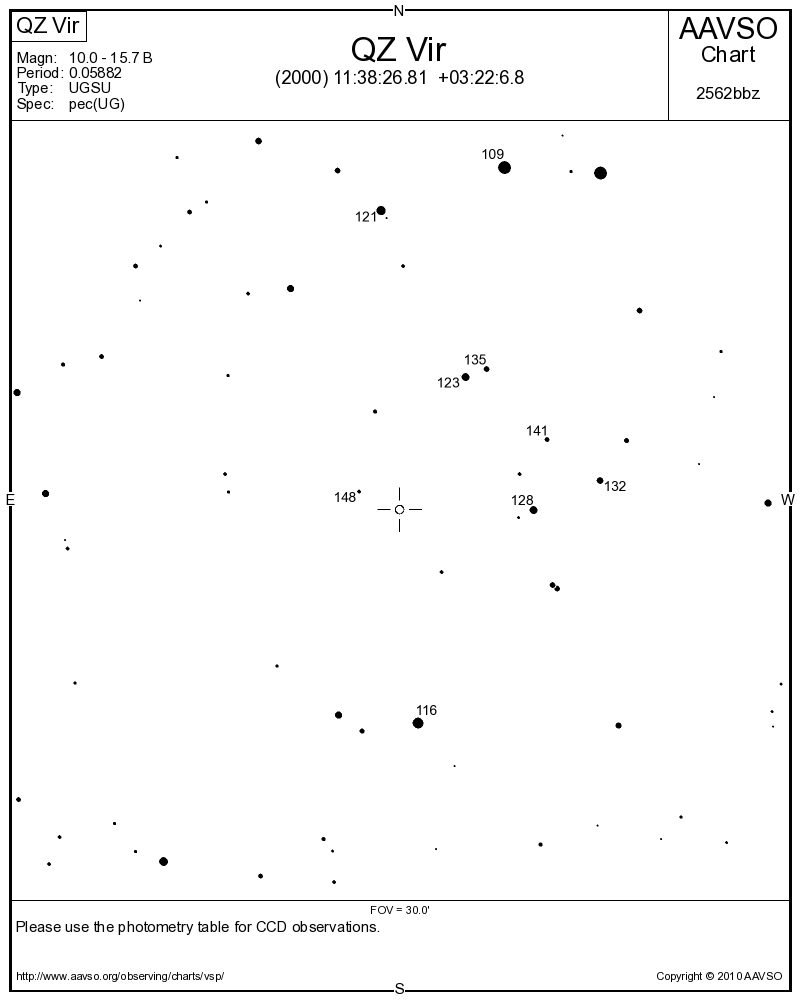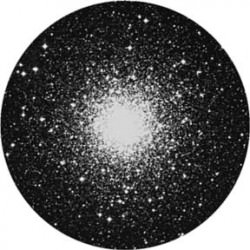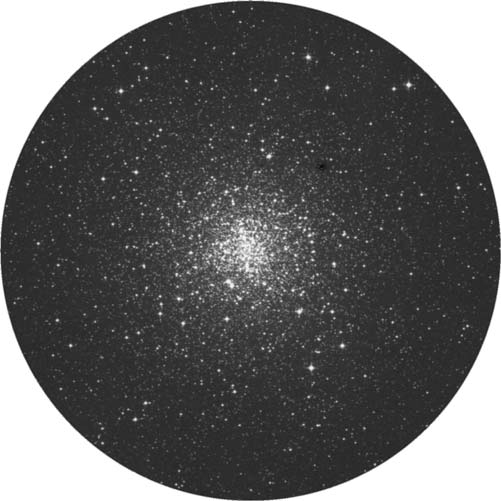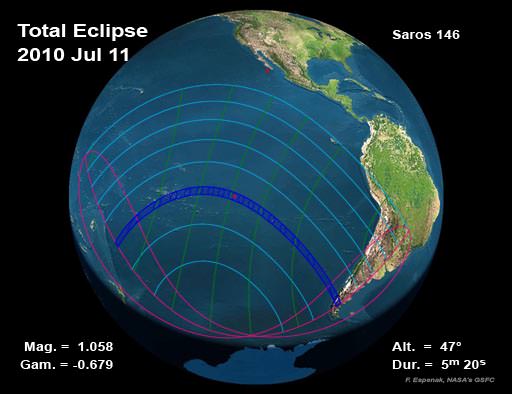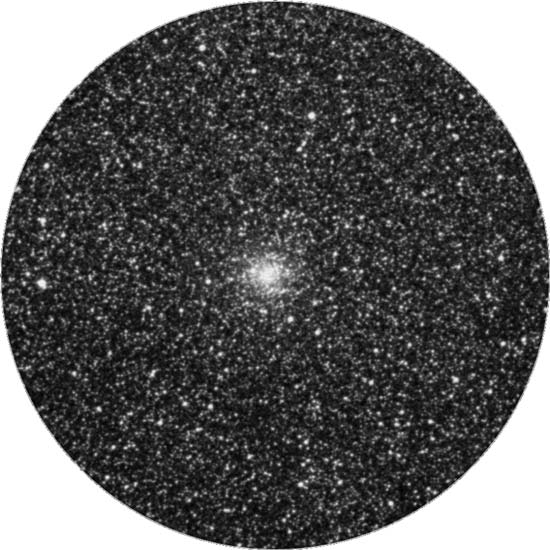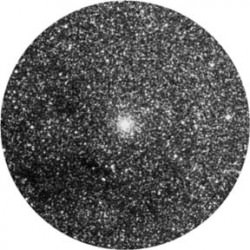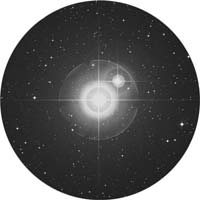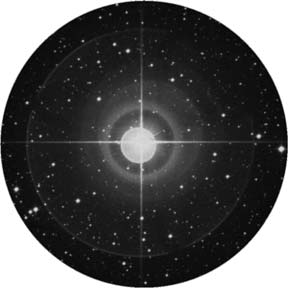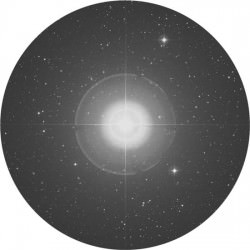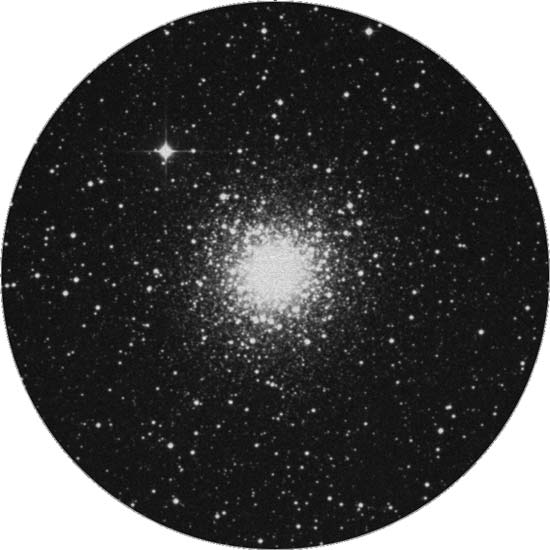[/caption]
“Now that she’s back in the atmosphere, with drops of Jupiter in her hair…” Oh! Hey, there! Come on over and have a seat. Yeah, I really like that “Train” song, too. While the Moon is putting the brakes on deep sky observing, why don’t you take a look though the magnificent eye of the 9″ TMB refractor of Dietmar Hager and we world-wide friends can spend a little quality time together with Jupiter.
Here… You look through the eyepiece of a little telescope for awhile and I’ll tell you some of the things we know about this giant planet.
What’s that you say? Yes. Jupiter is big… Big enough to hold the mass of 1,000 Earths and about 1/10 the size of our Sun. Its a heavy-weight, too… But, believe it or not, Jupiter’s density is only about 1/4 of that of Earth’s. Scientists think this means the giant planet consists mostly of hydrogen and helium around a core of heavy elements. That means Jupiter more closely resembles a sun instead of a planet! Yeah… It’s hot there, too. As a matter of fact, Jupiter is putting out twice as much heat as it receives from Sol. Near the core temperature may be about 43,000 degrees F (24,000 degrees C)… Even hotter than the surface of the Sun. Hot enough to get a burn? Darn right. Those subtle tones of red and brown are chemical reactions much like what happens when we humans get a sunburn.
I see you smiling in the dark. Are you starting to notice details Jupiter’s cloud bands? Even a small telescope shows these areas called “zones”. This is where chemicals have formed colorful layers of clouds at different heights. The white belts are made of crystals of frozen ammonia and they are positioned much higher than the dark belts. Of course, you know all about the “Great Red Spot”, but sometimes it’s pretty hard to see unless you know when to look. Jupiter makes a complete rotation in about 10 hours, so even if you can’t see something right now – you can wait awhile and it will come around.
Speaking of coming around, did you notice how close one of Jupiter’s moon is getting to the edge of the planet? Then keep watching because we’re about to see a transit happen. Jupiter has at least 60 moons, but 4 of them are bright and very easy to see even in binoculars. They were discovered by Galileo, and that’s why you’ll sometimes hear them called the “galiean moons”. When they zip around behind Jupiter in their orbit, it’s called a occultation – but when they go in front of the planet from our point of view, it’s called a tranist. The really fun part is that you can not only see the little moon going across the surface, but a few minutes later? You can see the shadow, too! Here’s a little bit of magic from another friend of ours named Sander Klieverik.

Isn’t that just the coolest? You’re going to be hearing a lot about Sander’s work here in the near future. And there’s going to be a great Jupiter event he wants to make sure you know about!
“On October 31, 2010 Europa and Ganymede will simultaneously cross the cloud tops of Jupiter from 02:26 till 03:21 UT as do their shadows from 04:17 UT till 07:00 UT. Timing of entrance of the first moon, Ganymede will be around 00.20 UT, following by Europe at 02:26 UT. The first shadow will appear 04:09, quickly followed by Europe’s shadow at 04:16. Two shadows in very close proximity should be a very beautiful view! Circumstances are favourable as Jupiter has a visual diameter of around 48 arc seconds, being a month after opposition in which Jupiter reached almost 50 arc seconds (minimum 33″). For the non-astronomers, when a planet is in opposition it is roughly closest to the Earth at this point of its orbit, making it appear bigger and brighter. At that moment it is visible almost all night, rising around sunset, culminating around midnight and setting around sunrise.”
In the meantime, why don’t you keep practicing timing galiean events and seeing them? Here’s a handy Jupiter Moon Tool, and Sander has also prepared a Jupiter Almanac as well!
“But tell me, did the wind sweep you off your feet? Did you finally get the chance to dance along the light of day… And head back to the Milky Way? And tell me, did Venus blow your mind? Was it everything you wanted to find? And did you miss me 1hile you were looking for yourself out there?”
Now, quit bogarting that eyepiece… It’s my turn!
Many thanks to the one and only Dietmar Hager, Jupiter Video courtesy of Northern Galactic and the up and coming Sander Klieverik’s “AstronomyLive”. Song lyrics – “Drops of Jupiter” are from the artists “Train”. Let’s keep on rockin’ the night!

